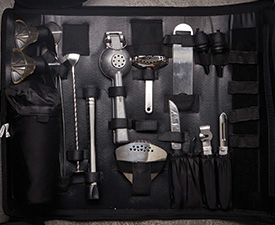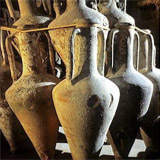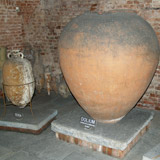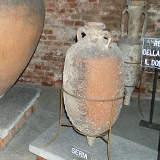An amphora is a type of ceramic vase with two handles and a long neck narrower than the body. The word amphora is Latin, derived from the Greek 'amphoreus', an abbreviation of 'amphiphoreus', a compound word combining 'amphi' - ('on both sides') plus 'phoreus' ('carrier'), from 'pherein' ('to carry').
Amphorae first appeared on the Syrian coast around the 15th century BC and spread around the ancient world, being used by the ancient Greeks and Romans as the principal means for transporting and storing grapes, olive oil, wine, oil, olives, grain, fish, and other supplies. They were used around the Mediterranean until about the 7th century, then wooden and skin containers seem to have taken the place of amphorae thereafter.
Amphorae were so cheap and plentiful, when empty, they were broken up at their destination. In Rome this happened in an area named Testaccio, close to Tiber, in such a way that the fragments, later wetted with Calcium hydroxide, remained to create a hill now named Monte Testaccio 45 metres tall and more than 1 km in circumference.
High-quality painted amphorae were produced in significant numbers for a variety of social and ceremonial purposes. Their design differs significantly from the more functional versions; they are typified by wide mouth and a ring base, with a glazed surface and decorated with figures or geometric shapes.
Two principal types of amphora existed: the neck amphora, in which the neck and body meet at a sharp angle; and the one-piece amphora, in which the neck and body form a continuous curve. Neck amphorae were commonly used in the early history of ancient Greece but were gradually replaced by the one-piece type from around the 7th century BC onwards. Most were produced with a pointed base to allow them to be stored in an upright position by being partly embedded in sand or soft ground.
Amphorae varied greatly in height. The largest could stand as much as 1.5 metres high; while some were less than 30 cm high, most were around 45 cm high.











